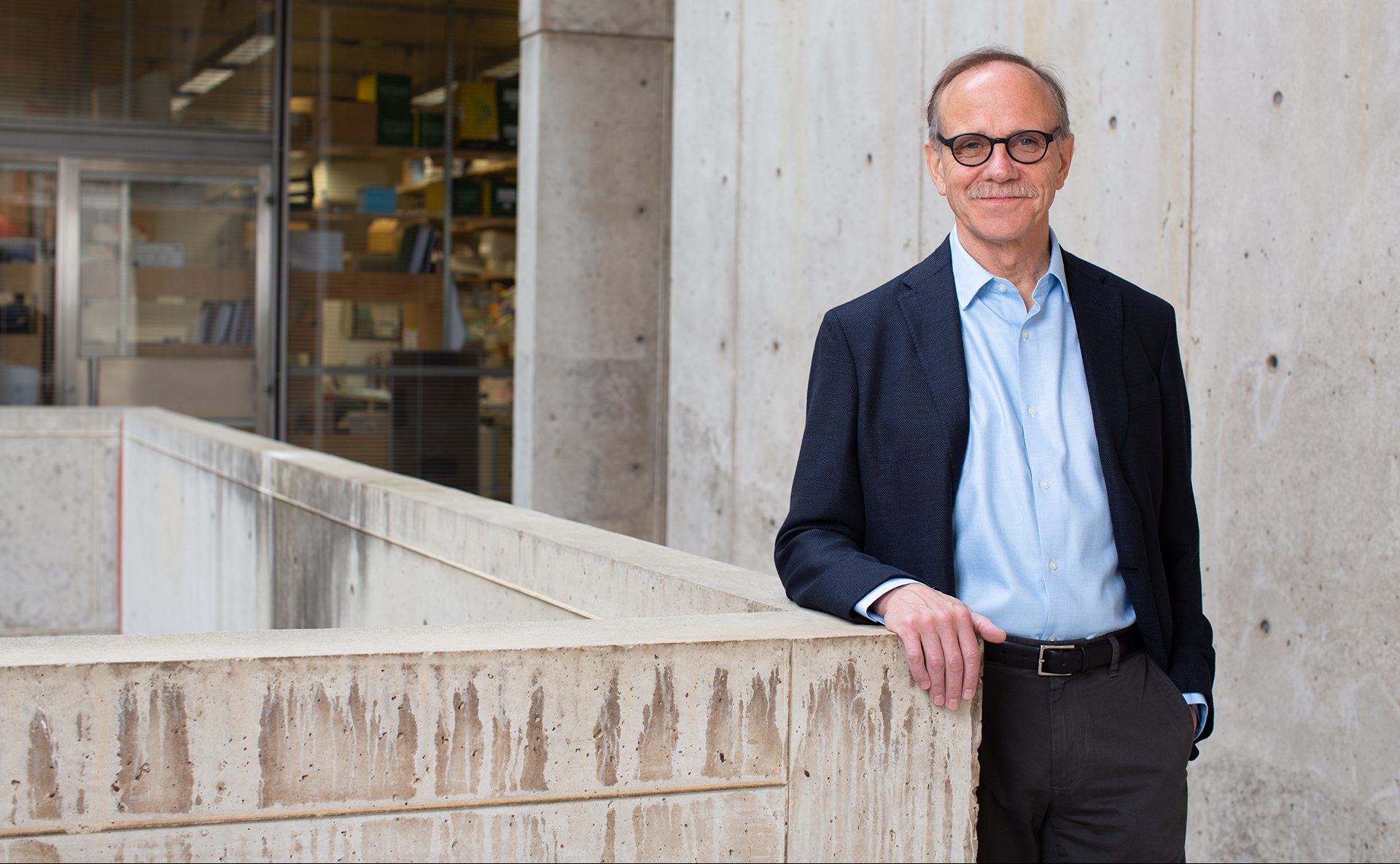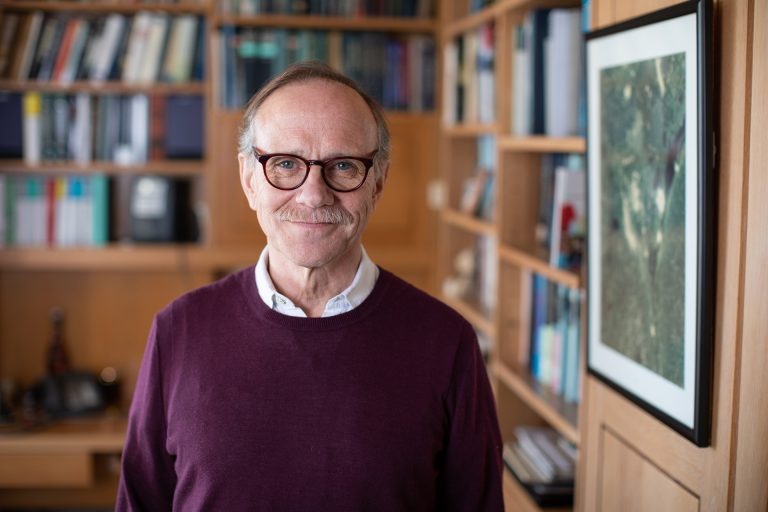
For Neuroscientist Rusty Gage, Progress is a State of Mind
Decades after discovering the benefits of physical activity to brain health, the alumnus remains fascinated with his research
A few months into his freshman year at the University of Florida in 1969, Fred “Rusty” Gage got onto a bus and ran into a childhood friend. The chance encounter was a surprise: The two had last seen each other over 4,000 miles away. Gage spent his youth in Europe, moving with his family among a few different cities before eventually attending high school in Rome, Italy. He had known his fellow bus rider, now also a student at UF, in Frankfurt, Germany.
As the two caught up, the friend mentioned to Gage that he’d been offered a student job in the lab of the neuroscientist Robert Isaacson, a professor in the Department of Psychology. But he wasn’t able to accept the job — Isaacson would need someone else for the summer.
The prospect piqued Gage’s interest. His older sister Suzanne Gage Brainard, a developmental psychologist who also attended UF, had long encouraged him to consider the field, sending him books and papers that might intrigue him. Besides, working in the lab of one of the university’s most respected researchers seemed as good a way to spend his summer as any.
Such moments of serendipity — and his willingness to embrace them — have meant everything for Gage (Psychology ’72). The job in the Isaacson Lab, which extended past that summer through the rest of his time at UF, put him on the path to becoming one of the country’s most prominent neuroscientists. Today, Gage is president, professor and Vi and John Adler Chair for Research on Age-Related Neurodegenerative Disease at the Salk Institute for Biological Studies, the prestigious biomedical research hub, founded by the creator of the polio vaccine in La Jolla, a neighborhood of San Diego.
Now 71 years old, Gage rose to fame in the 1990s on the strength of a discovery that upended common understanding about the human brain. Researchers had long believed that the brain stops producing new cells at a certain point in a person’s life. Gage and his collaborators found that physical activity, particularly running, stimulates the creation of new neurons in the hippocampus, boosting the brain’s power.
In the decades since, Gage and his protégés have found that factors such as environmental enrichment (regularly being exposed to new things) and a healthy diet can have a similar effect.
His groundbreaking accomplishments may suggest a single-minded focus on his field from early on. But Gage has long been guided chiefly by his own curiosity, wherever it happened to take him.
“I could have chosen different areas of science and have been just as happy. It’s about the discovery,” Gage said. “It’s learning about things that nobody else knows about: answering questions, and getting close to answering questions that are intrinsically interesting.
“My plan was always to do this as long as it was fun,” he said. “So far, it’s been fun.”

He has taken detours along the way: Before his breakthroughs in neuroscience, he spent his time as a Fulbright Scholar working under a histologist in Lund, Sweden, studying the structure of tissues. Further afield was a stint as a professional kickboxer — an apt diversion for the man who would later identify the importance of exercise to brain health.
The multifaceted life Gage has led, though, was almost entirely derailed by a traumatic event during his time at UF. A few years into his undergraduate career, things were going well. He had gotten comfortable in the Isaacson Lab, contributing to a project focused on collecting electrophysiological recordings of animals with epilepsy. He was also spending part of his time at Shands Hospital working with Frederick King, who would later become the founding chair of the UF Department of Neuroscience.
Gage’s routine commute between those two jobs would prove fateful: One day, in a freak accident in a parking lot, he was crushed between two cars. After being rushed to the hospital, he learned that the collision had broken his pelvis, leaving him bedridden. Gage was lucky to be alive. The injury, which threatened to end both his academic and athletic pursuits, turned out to be formative.
“There were several people who I thought were good friends of mine who never showed up after I got injured,” he said. “But the people who did show up were my science buddies.” As he rehabilitated and learned to walk again, graduate students and postdoctoral researchers from the Isaacson Lab would frequently visit to tutor him, share lab assignments, and keep him connected with the research.
“I was so embraced by this lab. … It was like a little family,” he said. “I really felt at that point what it felt like to be in the scientific community.”
It’s learning about things that nobody else knows about: answering questions, and getting close to answering questions that are intrinsically interesting.
Despite the setback, he would graduate early and go on to attend Johns Hopkins University for graduate school, working under a former student of Isaacson’s. As Gage’s career progressed, he never forgot how much it meant to receive active support and encouragement during his time of greatest need. Today at the Salk Institute, he continues to emphasize mentorship for the rising research stars in his lab. Each newcomer is connected with a senior researcher to provide guidance and insight. “You work together to make the lab not just about the science, but about the people,” he said.
All the while, he’s maintained a fascination with the work itself. And the liberal arts and sciences education he received at UF has been key to staying so engaged. “It makes the whole learning experience a little more interesting if you can integrate between disciplines,” he said. “Neuroscience by its very nature is an interdisciplinary science. I think the breadth of my knowledge, as it grew, gave me an opportunity to interact with people from more and more varied backgrounds.”
Today, his duties leading the Salk Institute as its president keep him out of the lab more than he might like. But he is still finding new topics to explore. Most recently, Gage has led a team of 10 Salk faculty members studying age-related neurodegenerative diseases such as Alzheimer’s disease. They’re looking at why and how these diseases impair the body’s ability to repair DNA.
“Every day from the time you’re born, every cell in your body undergoes 10,000 DNA-damaging events,” Gage explained. “And you have about 500 or 600 proteins in the nucleus that are busy repairing every one of those.”
The repair process, the researchers found, is concentrated on a very narrow section of the human genome associated with the cell’s identity, which defines, for example, what makes a neuron a neuron.
“It’s as if evolution has selected for repairing who you are, so you can retain your own identity,” he said. But with the onset of age-related neurodegenerative diseases, the repair process slows and those neurons break down at a much quicker pace. “They begin to lose their identity of who they are at a cellular level, which mirrors what happens at a cognitive level: Alzheimer’s patients lose a sense of who they are, and how you are related to them,” Gage said.
The research has the potential to lead to breakthroughs in the treatment of Alzheimer’s and other similar conditions. Perhaps just as important for Gage, the work passes the litmus test he set for himself as a researcher.
“I’m having as much fun in the lab as I’ve ever had,” he said.
Interdisciplinary Inspiration
Gage finds constant inspiration from other fields. Want to broaden your own horizons? See what he recommends.
This story appears in the spring 2022 issue of Ytori Magazine. Read more from the issue.


